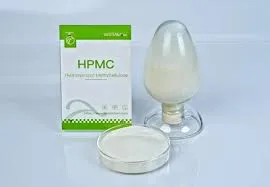
नवम्बर . 21, 2024 07:07 Back to list
hpmc viscosity
Understanding HPMC Viscosity A Key Factor in Formulation Science
Hydroxypropyl Methylcellulose (HPMC) is a widely utilized polymer in various industries due to its unique properties and versatility. One of the critical attributes of HPMC that influences its application is viscosity. Viscosity is a measure of a material's resistance to deformation or flow, and in the context of HPMC, it plays a pivotal role in determining how the polymer behaves in different formulations, particularly in pharmaceuticals, food products, and construction materials.
What is HPMC?
HPMC is a semi-synthetic polymer derived from cellulose, a natural polysaccharide. Through chemical modifications, such as hydroxypropyl and methoxy substitutions, the physical and chemical properties of cellulose are enhanced, resulting in a product that boasts excellent water-solubility and film-forming capabilities. These characteristics make HPMC an attractive ingredient in a variety of applications, including as a thickening agent, emulsifier, binder, and stabilizer.
The Importance of Viscosity
The viscosity of HPMC solutions is influenced by several factors, including the degree of substitution, molecular weight, and the concentration of the polymer in the solution. Typically, higher molecular weight HPMC grades exhibit increased viscosity when dissolved in water. This viscosity not only affects the flow characteristics of the solution but also influences the stability and texture of the final product.
In the pharmaceutical industry, the viscosity of HPMC is crucial for the formulation of drug delivery systems. For instance, in the production of controlled-release tablets, HPMC acts as a matrix-forming agent that controls the release rate of active pharmaceutical ingredients (APIs). A higher viscosity can slow down the release, ensuring a sustained effect. Conversely, in liquid formulations, the viscosity must be optimized to ensure easy administration and proper dispersion of the drug.
In the food industry, HPMC's viscosity properties contribute to the creation of texture in sauces, dressings, and baked goods. The ability to control viscosity allows manufacturers to achieve the desired mouthfeel and stability of their products. For example, sauces with a certain viscosity can adhere better to foods, enhancing flavor delivery and consumer satisfaction.
hpmc viscosity

Factors Affecting HPMC Viscosity
1. Molecular Weight Higher molecular weight HPMC grades provide greater thickening and gelling capacity. This is essential in applications requiring significant viscosity, such as in construction where HPMC is used in cement-based products.
2. Degree of Substitution The balance between hydroxypropyl and methoxy groups affects solubility and viscosity. Higher substitution often leads to lower viscosity at a given concentration.
3. Concentration Increasing the concentration of HPMC in a solution directly increases the viscosity. This principle is vital when formulating products to achieve specific rheological properties.
4. Temperature Viscosity can be affected by temperature, with solutions generally becoming less viscous as the temperature increases. This property is particularly important during processing and application.
Conclusion
HPMC viscosity is a fundamental aspect that influences the performance and quality of formulations across various industries. Understanding how to manipulate viscosity through the choice of HPMC grade, concentration, and processing conditions is essential for formulators aiming to meet specific product requirements. Whether in pharmaceuticals, food products, or construction materials, the role of HPMC and its viscosity cannot be overstated—it is, quite simply, a vital ingredient for success in formulation science.
-
Versatile Hpmc Uses in Different Industries
NewsJun.19,2025
-
Redispersible Powder's Role in Enhancing Durability of Construction Products
NewsJun.19,2025
-
Hydroxyethyl Cellulose Applications Driving Green Industrial Processes
NewsJun.19,2025
-
Exploring Different Redispersible Polymer Powder
NewsJun.19,2025
-
Choosing the Right Mortar Bonding Agent
NewsJun.19,2025
-
Applications and Significance of China Hpmc in Modern Industries
NewsJun.19,2025







